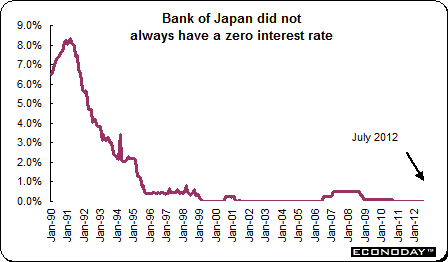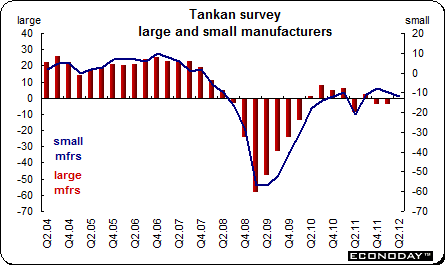Like other central banks, the Bank of Japan's primary goal is to maintain price stability of the financial system to provide the foundations for sound economic growth. Unlike other central banks, the Bank of Japan has been fighting deflation — falling prices — rather than keeping a lid on price increases or inflation. The BoJ finally announced an inflation target of 1.0 percent after being prodded to do so for many years at its February 2012 monetary policy board meeting. However, many thought it should have been set higher.
There are nine members of the monetary policy board, which includes the governor and two deputy governors of the bank. Masaaki Shirakawa succeeded Toshihiko Fukui in March 2008. The BoJ MPB meets monthly except in April and October when they meet twice. While the Bank seeks to normalize interest rates, the latest credit crisis and weakening economic growth has once again put that goal on hold. The governor has said that one of his goals was to make BoJ policy decision making more open. The MPB now issues a written statement when making its post meeting policy announcement.

The Bank of Japan maintained an interest rate of 0.5 percent from February 2007 to October 2008. Now the BoJ rate is virtually zero. At its February 2012 meeting the monetary policy board surprised Bank watchers and increased its asset purchase program to ¥65 trillion from ¥55 trillion. The BoJ increased its long-term JGB buying to ¥19 trillion from ¥9 trillion. In April it increased its asset purchase program to ¥70 trillion.
The most closely watched Japanese indicator next to the annual change in the CPI is the Tankan Survey, which measures in detail the industry sentiment in Japan. Originally created to help the Bank of Japan in its decision making, the Tankan is followed worldwide as a barometer of Japan’s economic health.

|